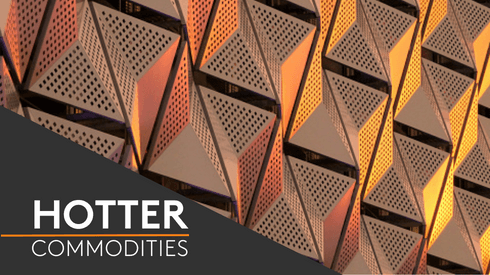“The electric vehicle upheaval continues to unfold, with the scale of market penetration and investment by battery and automotive manufacturers and infrastructure players, adjusting progressively upwards. This provides an additional dimension of future demand growth for a number of our key commodities,” Glencore said in its financial report released on Wednesday February 21.
Accelerating EV adoption requires an energy and mobility transformation that is forecast to unlock new sources of demand for commodities including copper, nickel and cobalt, it said.
An independent study, recently commissioned by Glencore, to gauge the potential demand for these commodities under the Electric Vehicles Initiative suggested an additional 4.1 million tonnes of copper, 1.1 million tonnes of nickel and 314,000 tonnes of cobalt supply will be required by 2030.
“These potentially significant new demand sources offer compelling fundamentals, particularly when coupled with persistent supply challenges,” Glencore said, while adding that its commodity mix is becoming less dependent on demand generated by infrastructure-related investment in developing markets.
Copper and cobalt
Global copper supply is expected to be affected by ageing assets, limited sector reinvestment, a diminished project pipeline and an elevated risk of mine disruptions, Glencore said.
“With global economic growth pointing to healthy demand, the copper market is likely to remain in substantial supply deficit, which, if it occurs, will in turn result in further inventory drawdowns,” it said.
The emerging battery and EV trend adds further uplift to the demand outlook and attractive fundamentals. With copper and cobalt expected to play important roles across the value chain of the energy and mobility evolution, from power generation and distribution, to energy storage and vehicles, it added.
The company produced 1.31 million tonnes of copper in 2017 in total, down 8% or 116,100 tonnes from a year ago. Glencore expects a production volume between 1.435-1.495 million tonnes of copper for 2018, up 9.54-14.12% from 2017.
The London Metal Exchange three-month copper price has mostly held above $7,000 per tonne since late last year amid labor concerns in South America and a positive macroeconomic outlook. The contract closed at $7,090 per tonne on February 21.
Glencore is targeting a 42% increase in cobalt production this year, despite the fact that full-year production for 2017 was down 3% to 27,400 tonnes.
Cobalt prices have surged rapidly over the past year amid mounting anticipation and excitement over the prospects for its use in the production of EV batteries.
Metal Bulletin’s low-grade cobalt, in-warehouse price was assessed at $38-39.30 per lb on February 16, up around 70% from one year ago, while the high-grade cobalt, in-warehouse price was assessed at $38.20-39.40 per lb on the same day, also up close to 70% on an annual basis.
Zinc and nickel
Higher zinc prices will incentivize higher concentrate production, easing treatment charges in the mid-term and eventually resulting in higher metal production. Yet, the environmental constraints in China and the slower-than-anticipated pace of mine restarts or new mine start-ups means that the current zinc tightness may remain for some time, Glencore said.
“As there is also a time lag before concentrates units convert into metal units, we expect the current strong pricing environment to be supported in the near to mid-term,” it said.
Glencore has kept its zinc production guidance unchanged for the 2018 financial year at around 1.09 million tonnes, matching actual production in 2017, despite the scheduled restart of its 100,000 tonnes per year Lady Loretta mine in the first half of this year.
The LME three-month zinc price had hit as high as $3,595.50 per tonne on February 15, the highest since July 2007.
On nickel, the market has remained in material supply deficit for a second year running, enabling global stocks to draw down quickly despite headline LME inventory suggesting otherwise, Glencore said.
Even with a conservative forecast for 2018 demand, the outlook is for continued sizeable deficits and further decreases in primary nickel stocks. Forecasted supply increases have been based on Indonesia exporting more nickel units in ore or nickel pig iron (NPI), with production elsewhere expected to be flat or fall, it added.
The LME three-month nickel price reached as high as $14,420 per tonne on February 15, the highest since May 2015, amid optimism over EV demand growth.
“Going forward, those commodities where primary market balances are in deficit or trending towards deficit, such as zinc, copper, nickel and thermal coal should see positive price divergence versus potentially oversupplied markets,” the company said.
Glencore’s net income attributable to equity holders jumped 319% to $5.78 billion, while its adjusted earnings before interest tax depreciation and amortization (Ebitda) grew 44% to $14.76 billion in 2017.
“After an encouraging end to 2016, which saw commodities recover from cycle lows, positive momentum continued through 2017, resulting in prolonged outperformance of Glencore’s key commodities versus the broader markets,” the company said.
Concerns of tightening financial conditions in China during the second quarter proved to be short-lived, with commodities rallying once again through the second half of the year, it noted.
A strong economic performance in both major developing and developed markets has underpinned supportive commodity demand conditions, while early signals of inflation and higher interest rates also bode well for commodities as an asset class, Glencore added.





